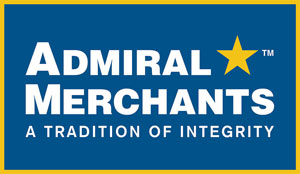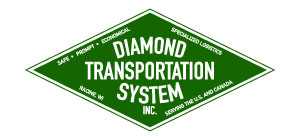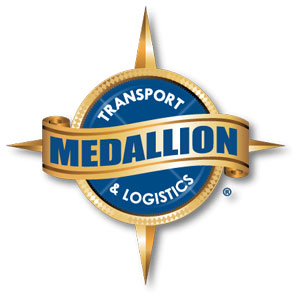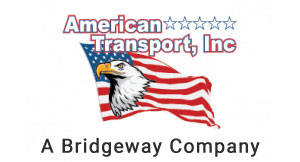12 Transportation Logistics for Wide Loads in Urban Areas
One of the first things that need to happen when hauling a wide load in any city or state is to know the transportation logistics for that area. Permits, certifications, specific requirements, and more vary from locality to locality. Keep reading if you’re looking for the logistics you’ll need to know when transporting in California’s urban areas.
Know the Specifics to Get the Right Wide Load Permit in California
It pays to have the facts before moving any wide load, especially in California. The last thing you want is to deal with permits or other headaches after the fact. It’s best to consult a professional like Osage Specialized Transport to get you from point A to point B safely and legally. Here are some logistics to help you know more about California oversize permits and more:
- Oversized loads are not allowed to travel on Memorial Day, Fourth of July, Labor Day, Thanksgiving Day, Christmas, New Year’s Day, and Washington’s birthday. Remember that some permits may indicate changes or adjustments to travel times. If you’re traveling in or around Los Angeles, Sacramento, San Diego, or San Francisco, no travel is allowed between 6 am through 9 am.
- Flags are mandatory on the four corners of wide and overlength loads. They’re also required at the end of any extension greater than four feet.
- Signage must be on the front and back sides of all oversized loads. These signs must be specific, such as WIDELOAD, EXCESSIVE FRONT OVERHANG, EXCESSIVE REAR OVERHANG, OVERSIZE LOAD, and LONG LOAD. A LONG LOAD should be shown for loads that are more than 100 feet overall, while an OVERSIZED LOAD should be shown for lengths less than 100 feet. Sign letters should be 10 in. high with 1 ⅝ in. letters on a yellow background.
- Wide loads must have flashing or strobing lights of an amber color attached to the top of the cab that will be visible 360 degrees at least 500 feet away. Additionally, two red lights must be affixed to the side and attached to the load or extensions that stick out more than four feet.
- The dimensions that qualify a load to be oversized are 8 ft. and 6 in. in height, 14 ft. overall length, 3 ft. overhang in the front, and 6 feet overhang in the rear. Keep in mind that this is a general guide. There may be local differences and additional conditions you must meet for transportation.
- Know the weight of your load. To be considered an overweight load, it must be 20,000 per single axle, 34,000 per tandem axle, and a maximum gross weight of 80,000. Remember that you can redistribute weight to avoid getting additional permits and being classified as an overweight load.
- When your load is 18 ft. or higher, you must complete a route survey to plan the haul. All utility companies along the route planned must be notified of the upcoming transport. You’ll need to submit a utility co. clearance note when you apply for your permit.
- Depending on the location, your wide or heavy load may require escort or pilot vehicles. They include:
- If you’re hauling a load over 100 ft. in length in L.A. or Los Angeles County, you’ll be required to have a car in the front and one in the rear of your truck. For loads more than 120 ft. but less than 135 ft., on specific routes in California, you’ll need a front and back pilot vehicle. You’ll need your front and back pilot vehicles for loads longer than 135 ft. anywhere in California.
- Generally, if you have a load over 12 ft. wide, you must have one front escort vehicle on two-lane roads and one rear escort. If traveling on four-lane roads, you may need two pilot cars, depending on the road. Ensure you have the required pilot vehicles, regardless of load and where you’re hauling.
- The height of your load can significantly impact additional hauling requirements. For a load that’s 18 ft., the escort vehicle must have a height pole on it.
- Weight restrictions can be murky when it comes to logistical requirements. If a load can’t maintain a minimum speed limit, there may be additional steps that must be taken for a permit. The California heavy haul department will be the best resource for heavy load requirements.
- Overhang typically depends on the route, city, and counties you plan to drive through. The best resource to get you what you need to plan your haul would be the transportation departments you plan to travel through.
- If your load requires a pilot car, that vehicle must have at least one strobing or flashing amber light on the highest point of that vehicle. This light must be seen from 360 degrees around the vehicle and a minimum distance of 500 ft.
- Pilot cars must have a two-way communication device that allows communication with the wide load hauler of no less than 15 miles.
- Pilot vehicles should always have signs of identification affixed to each side of the vehicle. It also must hang banners indicating WIDE LOAD, OVERSIZE LOAD, or LONG LOAD, which are at least 5 feet wide and 10 in. high with black lettering of no less than 1 ⅝ in. thick. Any signs on vehicles not in use must be removed.
- California oversize permits are relatively affordable. Single-trip permits run around $16, annual trip permits run around $90, and repetitive permits cost about $90. Keep in mind that these numbers are subject to change at any time.
Make Your Wide Load Transportation Simple with Osage Specialized Transport
Don’t spend another second trying to navigate the wide load requirements and permits needed in California and its urban areas on your own. Let Osage Specialized Transport help you from start to finish, taking care of every single step your transport will need to let you focus on the essential things in your life.
From local requirements and permits to planning the route and getting the transport support needed, Osage Specialized Transport has over 40 years of experience navigating the system. Call them at 303-326-0374 or contact them through their online form now to get started!















